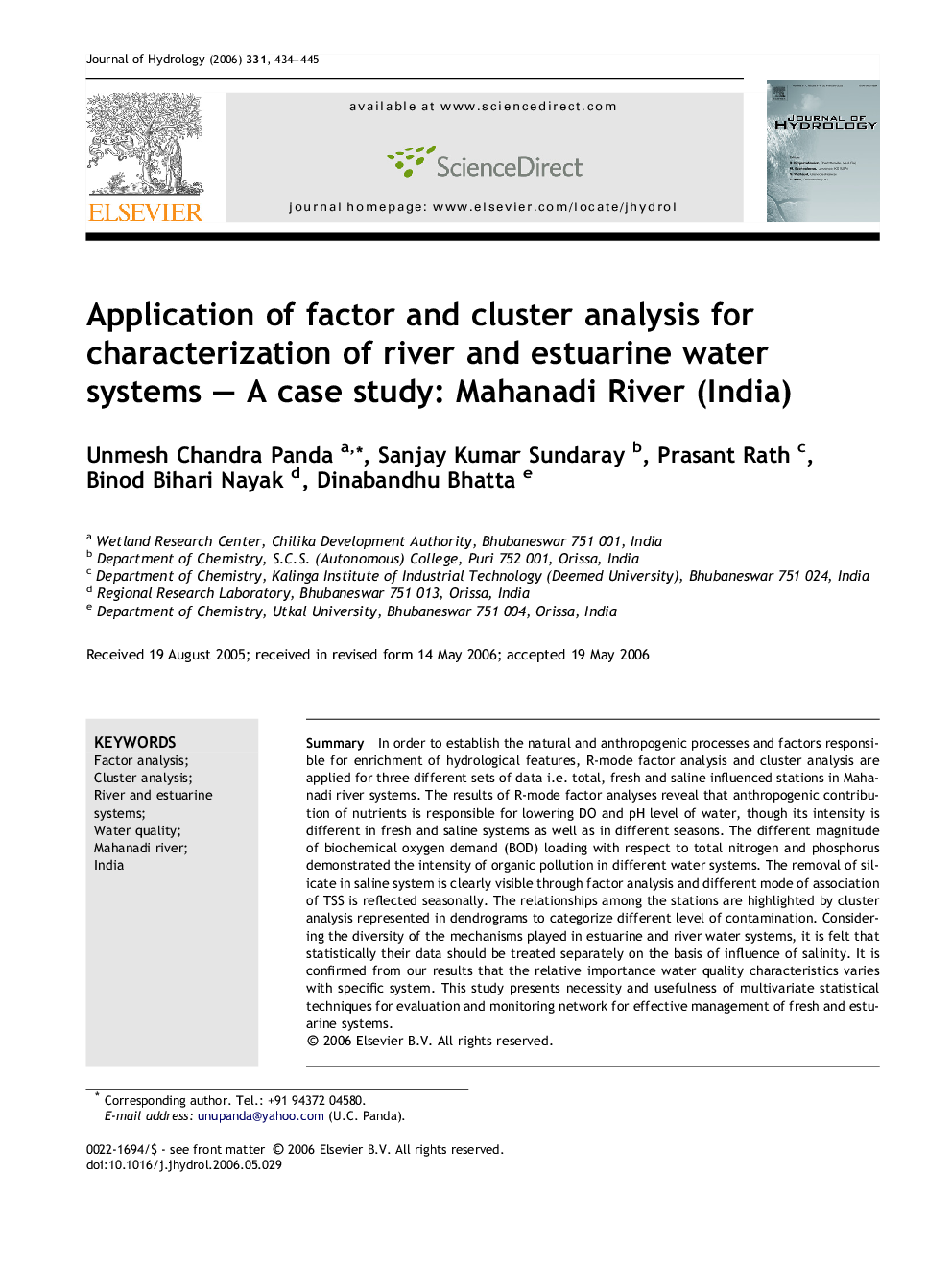| Article ID | Journal | Published Year | Pages | File Type |
|---|---|---|---|---|
| 4580190 | Journal of Hydrology | 2006 | 12 Pages |
SummaryIn order to establish the natural and anthropogenic processes and factors responsible for enrichment of hydrological features, R-mode factor analysis and cluster analysis are applied for three different sets of data i.e. total, fresh and saline influenced stations in Mahanadi river systems. The results of R-mode factor analyses reveal that anthropogenic contribution of nutrients is responsible for lowering DO and pH level of water, though its intensity is different in fresh and saline systems as well as in different seasons. The different magnitude of biochemical oxygen demand (BOD) loading with respect to total nitrogen and phosphorus demonstrated the intensity of organic pollution in different water systems. The removal of silicate in saline system is clearly visible through factor analysis and different mode of association of TSS is reflected seasonally. The relationships among the stations are highlighted by cluster analysis represented in dendrograms to categorize different level of contamination. Considering the diversity of the mechanisms played in estuarine and river water systems, it is felt that statistically their data should be treated separately on the basis of influence of salinity. It is confirmed from our results that the relative importance water quality characteristics varies with specific system. This study presents necessity and usefulness of multivariate statistical techniques for evaluation and monitoring network for effective management of fresh and estuarine systems.
